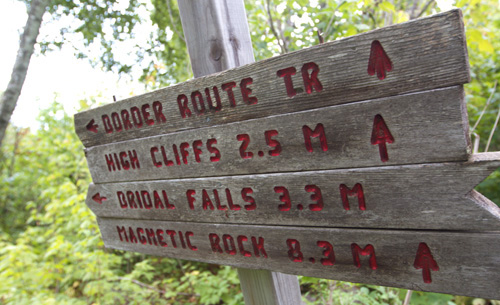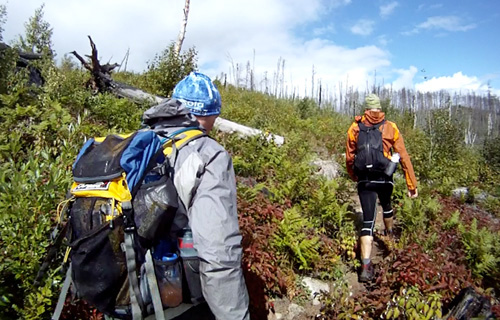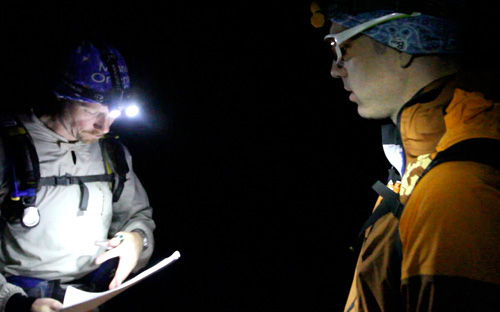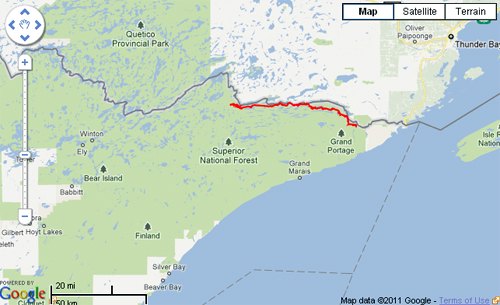Update: See the video on our trip, “24 Hours on the Border Route,” here.
Map in hand and looking north, my compass needle spun as we approached the big rock on the top of the hill. It was mile 1 on the Border Route Trail, a little-traveled path that traverses Minnesota’s Boundary Waters Canoe Area, and the area’s weird magnetism was already altering navigation on our course. “It spins when you get close to the rock!” said Peter Wentzel, one of my hiking partners for the trip.
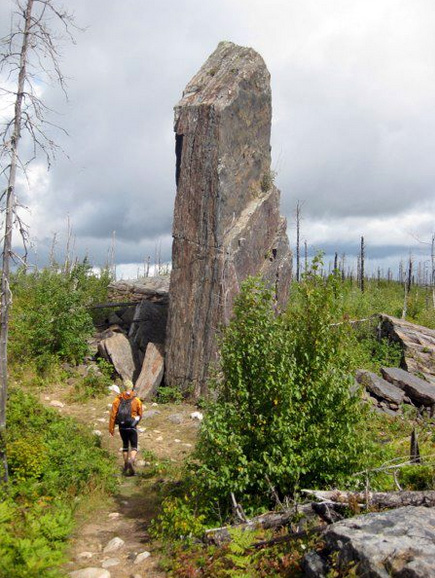
The anvil top of Magnetic Rock, a giant natural obelisk embedded with polarizing iron ore, towered overhead. Its strange pull on compass needles is known to hikers of the Border Route Trail, and magnetized ore in hills further along the path are rumored to render compasses useless for hikers trying not to get lost.
Staying on course proved a challenge during our trip over Labor Day weekend. Despite detailed topo maps and navigational know-how, my group — including Wentzel, T.C. Worley, and myself — got lost more than once on our fast-and-light trek. The Border Route Trail, created in the 1970s, is remote and hardly used. Deadfall clogs the path. Thorns and grasses drape from either edge, obscuring the 10-inch trail in hundreds of spots along its length.
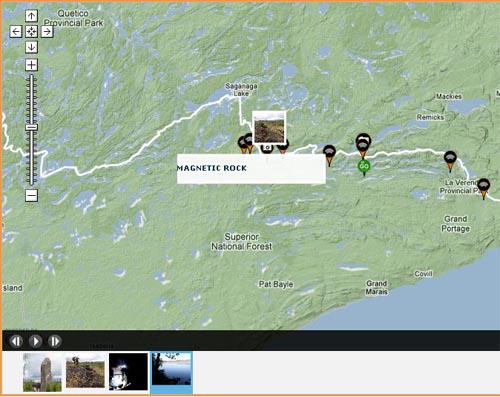
We began our trek on the Border Route on a Sunday afternoon at 1:20pm. The premise of our trip was “fast and light,” and with that theme in mind we ran and hiked for nearly 24 hours straight. Our goal was to see a giant swath of the trail in short time while also pushing physical limits. A record traverse of the trail in under 24 hours would be a cherry on the sundae if we could pull it off.
